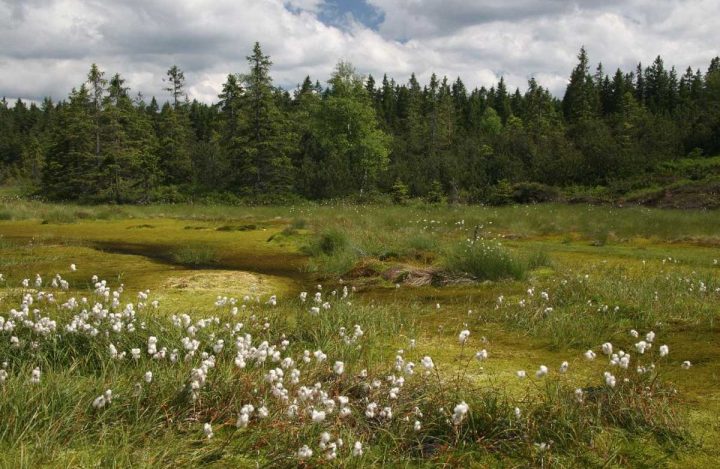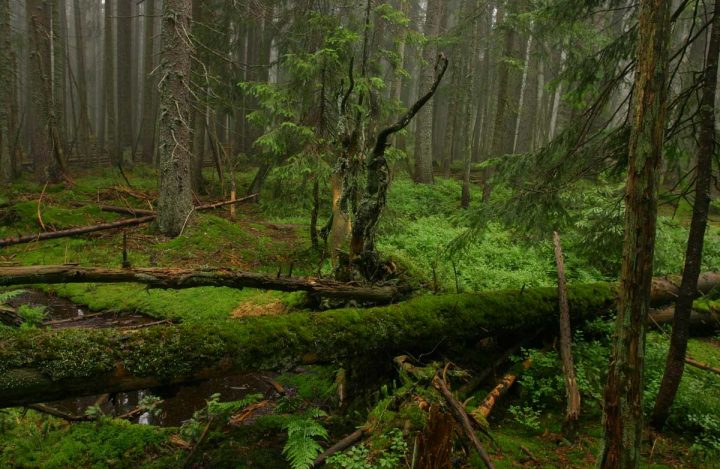Nature is very diverse in the territory of Šumava. Its rugged topography creates a mosaic of various habitats, suitable for numerous species. The characteristics of the most significant types of habitats, typical of the Czech and German sides of Šumava, can be found in the following picture.
Forests comprise the greater part of the territory of Šumava, making up as much as 80% of the total area of the NP.
The most significant types of forests are eutrophic beech forests, acidophilous beech forests, and alpine spruce forests (zonal vegetation units).
Primary treeless areas are found in places with adverse conditions for the formation of forests. These include, for instance, rock fields, cliffs, glacial lake cirques, and peaty wetlands – alpine and valley raised bogs.
Secondary treeless areas were created by human activity. They include meadows and pastures.
In addition to the three zonal vegetation units mentioned above, a great number of natural azonal units were created, the rise and development of which is usually edaphically conditioned, i.e. mostly by the perched water table, paludification (peat bog formation), a high percentage of coarse soil fragments, formation of rock relief, etc.
These include, in particular, peat bogs, riverine woodlands, bog spruce forests, relict pine forests, and treeless block fields, ravine mixed forests, ecosystems of lake cirques, rare relics of natural, mostly wetland and frost treeless areas, non-forest headwater systems, and ecosystems of standing and running water bodies.
The characteristic vegetational grading has naturally been wholly shattered by partial landscape deforestation, but, primarily, by the transformation of original forest associations to predominantly spruce stands.








